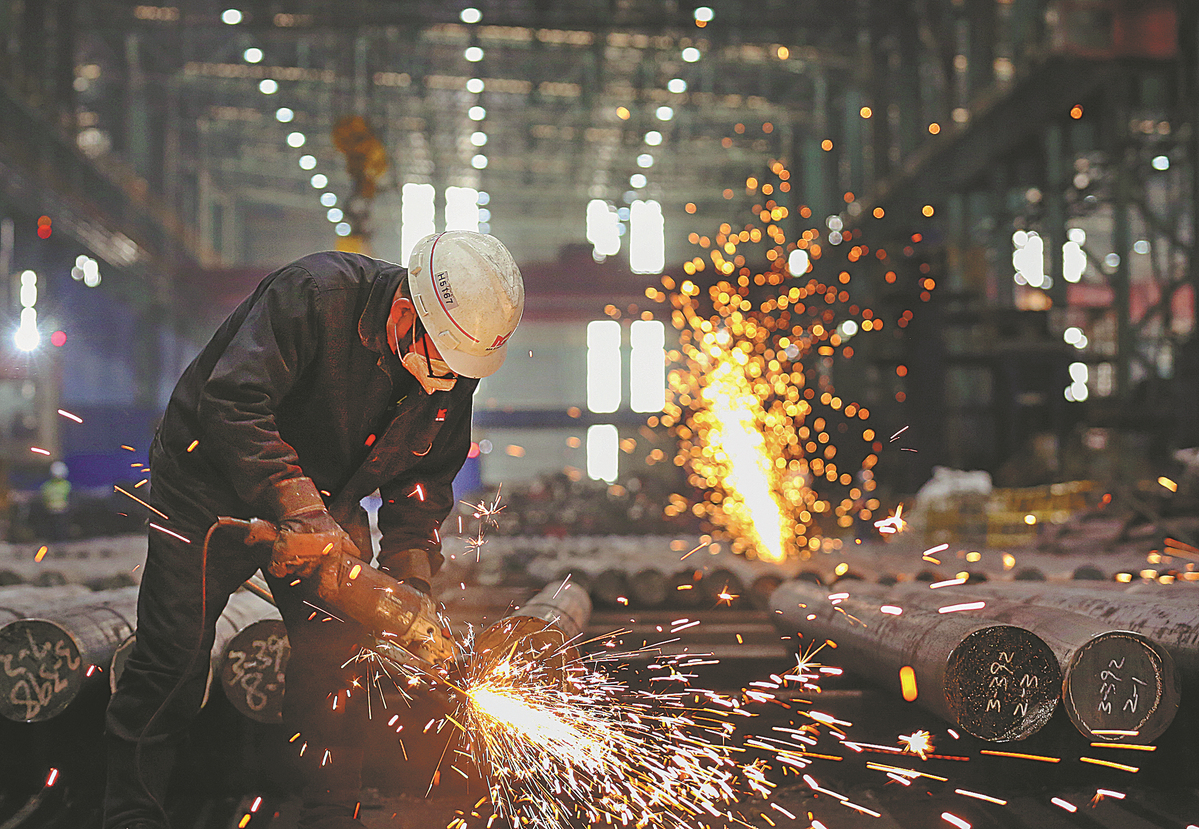Companies grapple with rising costs


Commodity price surge stirs debate on inflation, growth, fiscal and monetary policies
Rising commodity prices have spawned a robust economic debate in China, with experts grappling with the age-old conundrum-how to achieve stable growth amid a risk of high inflation even as the industry struggles to remain profitable, and a flurry of adjustments are made to fiscal and monetary policies?
Commodity prices turned runaway last year as major developed countries unveiled liberal liquidity injections and expansionary fiscal policies for economic reopening after the 2020 pandemic impact. The consensus among economists is that strong industry revival, reduction in inventories, higher appetite for risk and depreciation of the US dollar all combined to push commodity prices higher. And now, heightened geopolitical tensions involving Russia and Ukraine have added to the economic turmoil.
Rising raw material prices may push up companies' costs. They either have to absorb such rising costs and settle for lower profits or raise product prices to remain profitable and grow. If they raise prices of their products or services, it may have an impact on downstream consumption, aggravate inflation and crimp the global economic recovery, experts said.
Exporters have already felt the pressure. Since March 17, more than 20 leading Chinese papermakers, including industry giant Shandong Chenming Paper Holdings Ltd and Shandong Sun Paper Co Ltd, have announced they will raise paper prices by 100 yuan ($15.7) to 300 yuan per metric ton to combat soaring raw material and energy prices.
Likewise, heating, ventilation and air-conditioning companies best represented by Midea, Haier and Daikin announced they will raise their product prices by 8 percent to 10 percent in China from March 16. The surging prices of commodities like copper, iron and aluminum, whose negative impact has been amplified by the lingering COVID-19 pandemic, have left these companies with no better choice.
Styrene, which is extracted from oil, is the major raw material used at resin processing enterprises. Li Dajun, general manager of Zhejiang province-based Pure Resin Co Ltd, said the styrene price has jumped from 7,000 yuan to 12,000 yuan per ton over the past few months. Therefore, up to 80 percent of the company's costs have been used to acquire the raw material, affecting production and delivery.
The textile industry is not immune. Xu Xianyou, an account manager of Jiangsu High Hope Textile Import and Export Co Ltd, said orders of the company have been significantly contracting due to unstable raw material prices.
"Usually, garment companies will place larger orders to textile makers for the designs that are better received among consumers. It is the most economical and efficient way for garment companies. But garment companies have cut their orders this year. And yet, our company's headcount remains unchanged and so do people's working hours. As a result, our costs have increased," Xu said.
























